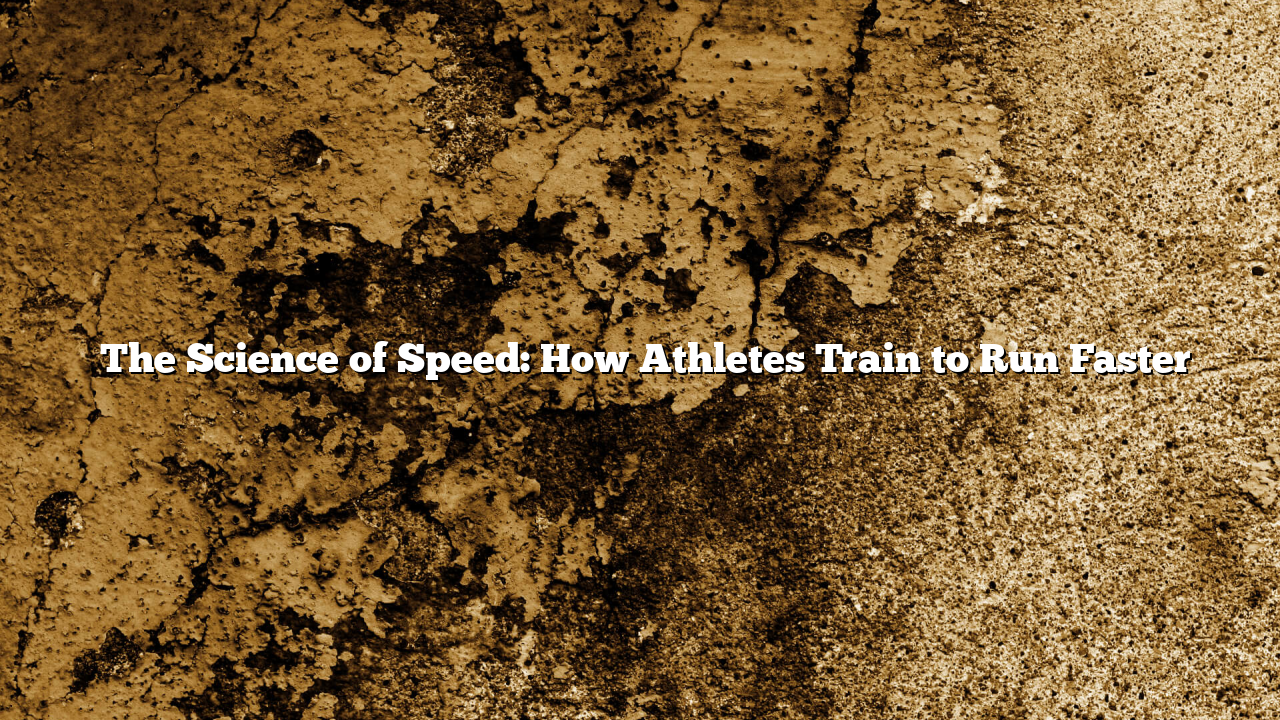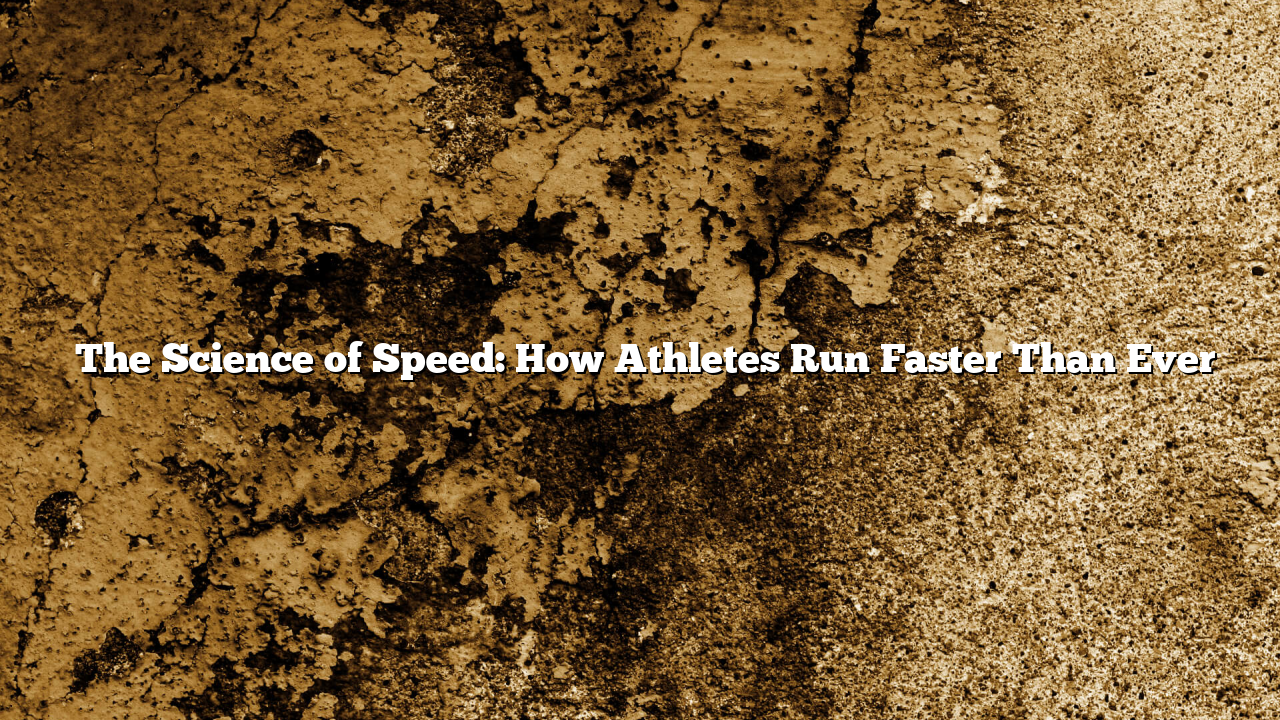Introduction
Speed is one of the most important factors in many sports, from sprinting and football to basketball and rugby. Athletes who can accelerate quickly and reach top speeds have a significant advantage over their competitors. But what exactly makes someone fast? Is it purely genetics, or can speed be trained?
In this article, we explore the science of speed, the role of muscles and biomechanics, and the training techniques used by elite athletes to run faster.
The Science Behind Speed
Speed is not just about running as fast as possible. It is a combination of biomechanics, strength, coordination, and reaction time. The three key phases of sprinting are:
1. Acceleration Phase
● This is the first 10-20 meters of a sprint, where the runner pushes off the ground with maximum force.
● Sprinters use a forward lean and powerful strides to build momentum.
● idtoto4d ’s legs and core, the faster they can accelerate.
2. Maximum Velocity Phase
● This is when the athlete reaches their top speed (usually between 30-60 meters in a 100m sprint).
● The runner’s posture becomes upright, and strides become longer and more relaxed.
● Efficient arm movement and stride frequency (steps per second) are crucial at this stage.
3. Deceleration Phase
● Even the fastest sprinters begin slowing down after 60-80 meters.
● The goal is to maintain speed for as long as possible by minimizing fatigue and keeping form strong.
Genetics vs. Training: Are Fast Runners Born or Made?
Genetic Factors
● Some people are naturally faster due to their muscle composition.
● Fast-twitch muscle fibers are responsible for explosive speed and power. Sprinters tend to have 70-80% fast-twitch fibers, while endurance runners have more slow-twitch fibers.
● Height and limb length also play a role—longer legs can help cover more ground with each stride.
Training and Development
● While genetics provide a foundation, speed can be improved with training.
● Strength training, sprint drills, and technique improvements help maximize an athlete’s natural potential.
● Even if an athlete is not born the fastest, proper training can significantly increase their speed.
How Athletes Train to Run Faster
1. Strength Training
Stronger muscles generate more force, which leads to greater acceleration and top speed. Key exercises include:
● Squats – Strengthen the quadriceps, hamstrings, and glutes for powerful strides.
● Deadlifts – Improve overall leg and core strength.
● Calf Raises – Strengthen the lower leg for better push-off.
2. Plyometrics (Explosive Training)
Plyometric exercises focus on quick, explosive movements, which improve reaction time and power. Examples include:
● Box Jumps – Build explosive power in the legs.
● Bounding – Helps increase stride length.
● Sled Pushes – Mimic sprint acceleration with added resistance.
3. Sprint Drills
Elite sprinters use drills to improve their running form and efficiency. Common drills include:
● High Knees – Develops knee lift and running posture.
● A-Skip and B-Skip – Improve stride mechanics.
● Resisted Sprints – Using resistance bands or parachutes to increase power.
4. Flexibility and Mobility Training
Tight muscles can slow down an athlete and increase injury risk. Stretching and mobility exercises improve range of motion and sprint efficiency.
● Dynamic stretches before training (leg swings, lunges, hip openers).
● Static stretching after training (hamstring, quadriceps, and calf stretches).
5. Sprint Technique and Biomechanics
Proper technique is essential for maximizing speed. Key components include:
● Arm movement – Arms should move in a straight line (not across the body) to avoid losing momentum.
● Foot placement – Sprinters should land on the balls of their feet, not their heels.
● Posture – A slight forward lean during acceleration and an upright position at top speed.
How the World’s Fastest Athletes Train
Usain Bolt (Jamaica)
● Holds the 100m world record (9.58s) and 200m world record (19.19s).
● Used strength training, sprint drills, and reaction time exercises to maximize his performance.
● Focused on explosive starts and stride length to dominate races.
Tyreek Hill (NFL – American Football)
● One of the fastest players in the NFL, known for his ability to accelerate quickly.
● Trains with hill sprints, agility drills, and weightlifting to improve speed and explosiveness.
Cristiano Ronaldo (Football/Soccer)
● Uses resistance training, sprint intervals, and plyometric exercises to maintain elite speed.
● Focuses on quick footwork drills to stay agile on the field.
The Role of Nutrition and Recovery in Speed Training
1. Proper Nutrition
● Carbohydrates provide energy for high-intensity training.
● Protein helps muscles recover and grow.
● Hydration prevents fatigue and maintains muscle function.
2. Recovery Techniques
● Sleep – Essential for muscle repair and peak performance.
● Foam Rolling & Stretching – Helps prevent injuries.
● Cold Baths & Ice Therapy – Reduce muscle soreness after intense training.
The Future of Speed Training
With advances in sports science, biomechanics, and technology, athletes are getting faster every year. Future developments may include:
● AI and motion analysis to optimize sprinting technique.
● Wearable sensors that track an athlete’s biomechanics in real-time.
● Genetic research to understand muscle performance and injury prevention.
Conclusion
While genetics play a role in speed, elite athletes train relentlessly to maximize their potential. Strength training, plyometrics, sprint drills, and proper biomechanics all contribute to faster sprint times. As sports science continues to evolve, the limits of human speed may be pushed even further.
Whether you’re a professional athlete or just someone looking to improve your speed, dedicated training and discipline can make a significant difference. The next generation of sprinters may one day break records we once thought were impossible.
The Science of Speed: How Athletes Train to Run Faster











Leave a Reply